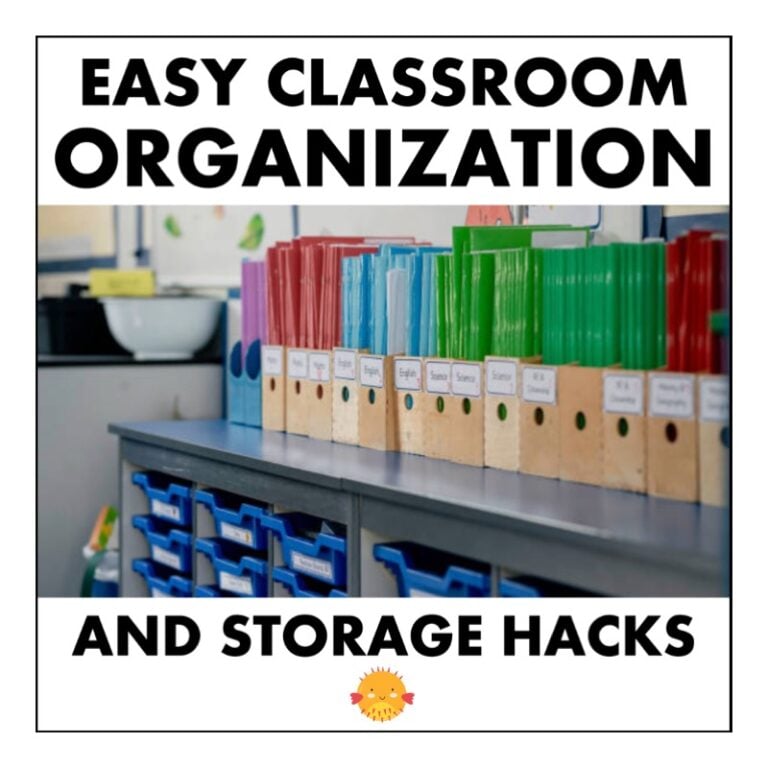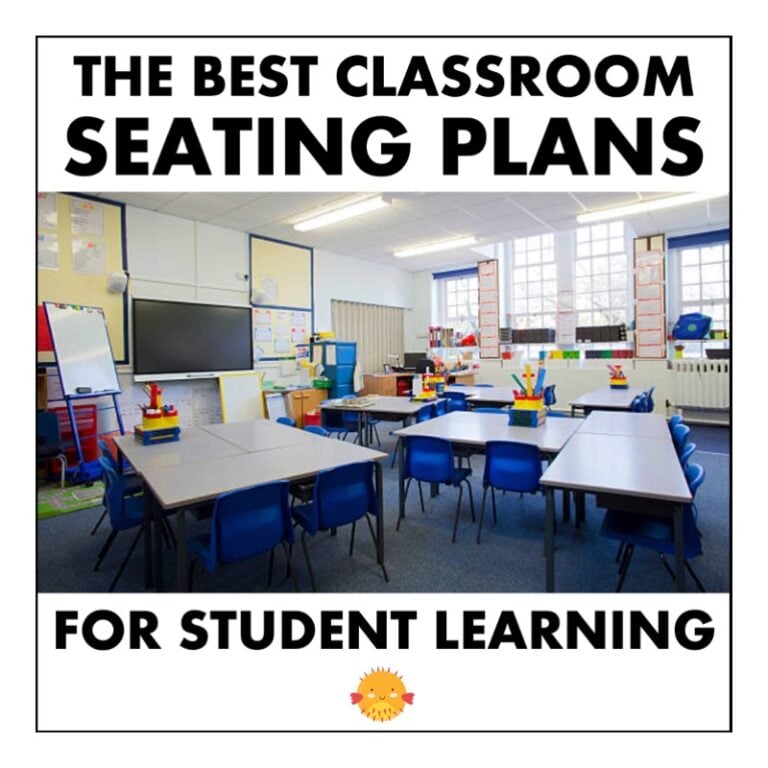
1 Easy Solution to Messy Student Desks
I’ve been teaching third grade for quite a few years now and I’ve tried all kinds of seating arrangements…
- single desks
- desks in groups
- desks in pairs
- rows of desks
.
What I have discovered is that little kids = messy student desks. After about 3 weeks of school, they start treating their desks like a personal trashcan with loose papers hanging out everywhere. DRIVES ME CRAZY!!!
I also realized that half of my behavior problems were a direct result of desks… playing around in them, hiding forbidden objects in them, etc.
So a few years ago, I began a mission to eliminate the problem of messy student desks in my room.
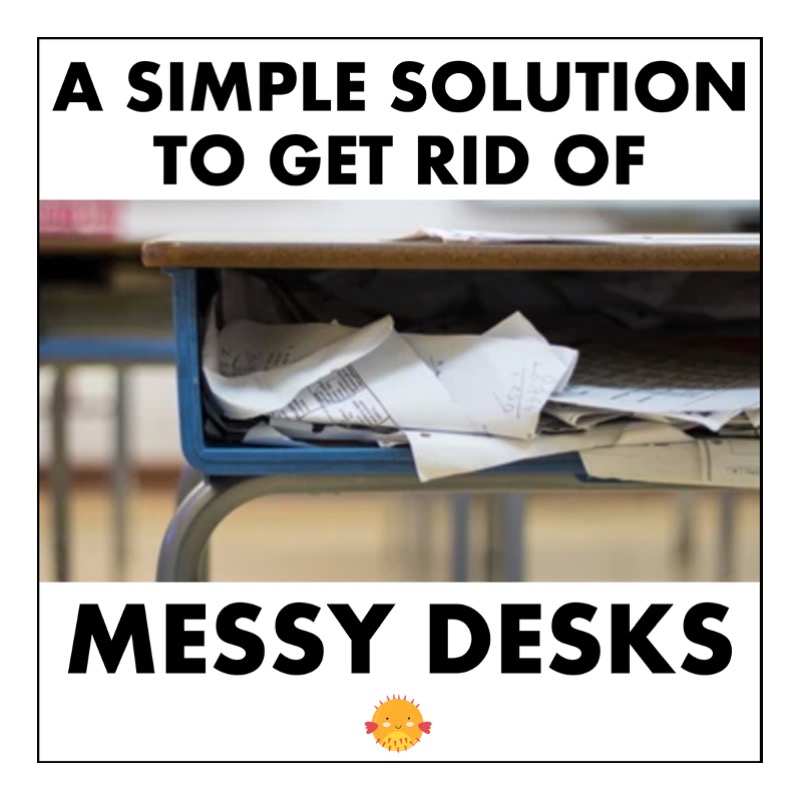
.
Getting Rid of Messy Student Desks – Attempt 1
Step one was to ditch my desks. I went back to round tables like I had when teaching kindergarten.
My room looked like this:
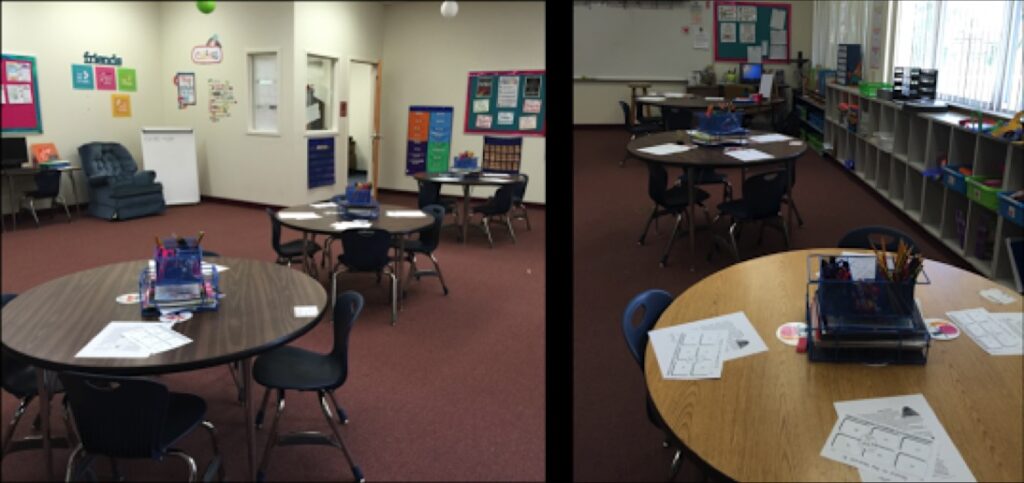
.
This was the arrangement I had for two years. It was MUCH better than desks! There was nowhere for the kids to hide things, no unfinished work that was discovered crammed into the back, no fiddling around inside, and the kids had plenty of work space.
But the round tables did present a few challenges:
First, the kids were always in each others’ faces. It was great for group work, but sometimes you need them to work independently. Round tables make that hard. During tests, it was nearly impossible to keep their eyes on their own papers.
Second, the talking…. oh, the talking! If you want a noisy class, get round tables. I personally don’t do well with a lot of noise. So this seating arrangement ended up driving me nuts most of the time.
Third, because you have kids facing every single direction, it’s hard to limit distractions. There is always someone else to make eye contact with, always something interesting to look at, and no matter where you stand, half of your students will be facing a different direction.
.
My Final Solution to Messy Student Desks
This year I decided to try something different to stop the issue of messy student desks. The answer came to me as I was moving furniture around at the end of the year. Why not just use a bunch of long tables?
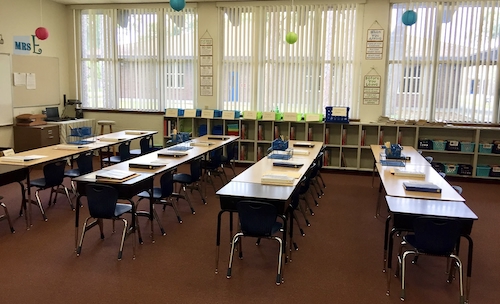
.
So far this is the best arrangement I’ve ever had. Everyone is facing front, but they all have a shoulder partner. If I want groups, I have the first and third rows turn around to face the rows behind them.
You can see there is a desk at the end of each row. That was necessary because of the number of kids. But if you look closely, you’ll see that those desks are turned around backwards. That eliminates the problems with trash, piles of papers, hiding things, and messing around.
This arrangement also makes it really easy to move seats if I have to. With desks, you have to either move the desks along with the kids or clean them out and move all their stuff. There’s none of that with tables. I just say, “You move here and you move here.” Problem solved.
One other reason I really like tables more than desks… desks get shuffled around during the day. No matter how many times I straighten them, the desks end up looking crooked within a few minutes. Tables stay put for the most part.
.
What if I can’t have tables and am stuck with desks?
At the end of the day, you have to work with what you’ve got. That doesn’t mean you should resign yourself to a messy desk problem. You can teach your students to keep a clean desk by working to improve their organizational skills.
First, help them get their disorganized desks under control:
- Tell the whole class to pull everything out their desks.
- Have them separate it all into 3 piles: school supplies, materials, and trash
- Send someone around to collect the trash. This includes broken crayons, dried out markers, and old homework assignments that weren’t turned in.
- Make sure everyone has a pencil box or something to store their supplies in (even a clear ziploc bag will work)
- Make a list on the board of what is allowed to go back into their desk: supply box, 1 chapter book, textbooks, red folder, and daily planner – for example.
.
After they put the allowed items back inside, whatever is left goes in their book bags or gets put away. Sometimes I have kids with 7 or 8 books in their desk that belong in the classroom library. Be sure to post the list of what should be in their desks on your bulletin board so they can periodically check it.
Next, help them develop an organization system and good habits:
- Make sure everyone has specific folders – math, reading, social studies, take home, etc. Use a different color for each one if possible.
- Give them a dedicated spot for graded assignments and stuff that goes home – student mailboxes, hanging files, or cubbies for example
- Set aside regular times to tidy up. I like to do it on Friday afternoons, but it could be part of your morning routine or daily pack up time.
.
Set up some rewards for keeping a tidy space.
- The Desk Fairy is loved by many elementary school teachers. She flies around when students aren’t there and leaves a fairy note on the extra neat desks. Younger students love this!
- Reward Coupons a great tool to use. You can place one on the student’s desk that looks the best. Sometime the entire class can earn a group reward (like extra recess or dance party) when the whole room looks great.
- A little piece of candy on every clean desk in the morning is a great way to start the day and an effective motivator.
.
With a little effort, you can teach your students that a messy workspace just creates more work.
Before I moved to using tables, “How to organize your desk” was always part of my lesson plans at the beginning of the year. It’s a routine I teach right along with other classroom procedures and expectations and revisit all throughout the year.
So whatever your seating arrangement may be – desks, tables, or something else – take the time to teach your class how to keep their space neat and messy student desks will be a thing of the past.

